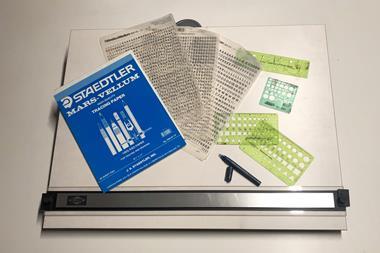And holds up the pace of scientific progress

‘It’s such a waste of time. I’m constantly running reactions to get these last examples to a good yield, and my contract is about to run out.’
That’s what Marc, a postdoc from a well-known catalysis group, told me at a conference while we were discussing the substrate scope in his project. I couldn’t stop thinking about how many PhD students and postdocs might feel, at times, just as discouraged as he did. Especially those working under short-term contracts or facing expiring visas, committed to finishing their projects before moving on to the next step in their career.
While mental health in chemistry and in academia is receiving an increasing amount of attention, the conversation still mainly focuses on the tools scientists can use to cope with stress on their own. Coping with stress is a valuable life skill to master, and it is very important that institutions have begun to provide stress management courses for scientists. However, while individual efforts can offer some relief, they shouldn’t be expected to resolve the systemic issues that often are the primary sources of stress in research in the first place.
Dramatic increase
What especially came to my mind in this context after speaking with Marc, is that the average size of a published substrate scope – which summarises how different starting materials perform in the reaction or method under investigation – has increased significantly over the past 15 years. In fact, two independent analyses (one by Marisa Kozlowski, editor-in-chief of Organic Letters, and another by Frank Glorious’s group at the University of Münster, Germany) show respectively that when looking at the size of substrate scopes published in Organic Letters, or in Organic Letters and JACS combined, the average number of examples reported has more than doubled in the past decade. This represents a substantial increase, even in journals intended for brief reports such as Organic Letters.
Yet this increasing demand is rarely addressed in discussions about the pressure that scientists face. In fact, despite the growing awareness around burnout and anxiety in research, larger tables are often welcomed rather than questioned, even when the extra work may not be scientifically valuable.
Nearly 12% believed that a method development paper should contain at least 30 examples in its substrate scope
Of course, from a scientific perspective, a well-performed substrate scope is a crucial aspect of a method development publication in catalysis or organic synthesis. Moreover, a broad scope is essential to demonstrate the generality and versatility of a new reaction. However, the expectation for how many examples should be included in a general substrate scope has risen unnecessarily, especially for shorter publication formats.
Nearly 12% of almost 2000 respondents to a 2022 Twitter poll by The Journal of Organic Chemistry and Organic Letters believed that a method development paper should contain at least 30 examples in its substrate scope. In response, Kozlowski published an enlightening editorial highlighting this trend as problematic and offering some guidance on how to design a scientifically sound scope with fewer, better-chosen examples.
She also included an example from her own laboratory including 16 substrates, and stressed the importance of displaying some negative results directly in the main table. In fact, these failed examples can help clarify the limitations of a method and can support the development of predictive tools in cheminformatics for synthetic chemistry. Another advantage of this approach, as Kozlowski pointed out, would be the ability to channel efforts into developing a new method earlier, rather than continually expanding the scope of the same one.
However, an additional often overlooked but important benefit of routinely including ‘failed reactions’ in the scope is that it would help researchers move forward more efficiently and feel more positive about their experimental progress. In fact, by reframing these negative results as valuable contributions rather than discarded results, researchers may stop feeling stuck repeating reactions – and reduce their experimental workload.
Multiplying the pressure
An unthoughtfully large substrate scope also creates an enormous amount of additional experimental work – a single entry as an isolated yield in a table often represents multiple reaction attempts and workups, purification, isolation and a full characterisation of the product. This also increases the pressure and demands for PIs, reviewers and editors, who must spend extra time ensuring there are no mistakes in any of the reported examples and the corresponding data.
Wouldn’t it make more sense to aim for a clear, insightful scope built from fewer carefully selected substrates? Wouldn’t it be better to include a couple of highly instructive failed attempts? With every addition, we should ask ourselves: are we gaining insight, or just growing the table?
If we questioned our approach to research more often, how many more unnecessary practices would we uncover that are making researchers’ lives more stressful? Reflecting on this more regularly could speed up the pace of new discoveries and, alongside institutional efforts towards promoting individual wellbeing, also help reduce the stress and anxiety epidemic affecting so many young scientists today.












No comments yet